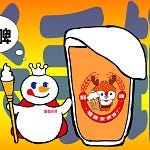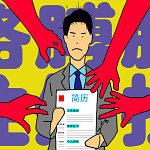Welcome to RealTime Mandarin, a free weekly newsletter that helps you improve your Mandarin in 10 minutes a week.
Subscribe today to get your fluency back, stay informed about China, and communicate with confidence in Chinese — all through immersion in real news.
Concerns over the quality of Chinese-made generic drugs have resurfaced in China.
It began when a delegate of the Shanghai Chinese People's Political Consultative Conference (CPPCC) warned that some drugs procured through China’s centralised bulk-buying system (集采制度) are not as effective as their branded equivalents.
He used beautifully idiomatic, but blunt, language to make the point in just 12 characters:
"We have some anesthetics that don’t sedate, blood pressure drugs that don’t lower blood pressure, and laxatives that don’t relieve constipation."
麻药不睡、血压不降、泻药不泻。
Refresher: Generic drugs (仿制药) are copies of branded drugs (原研药) which are no longer patent-protected. They are sold at much lower prices but are required by regulatory agencies to meet the same safety, effectiveness, and quality standards as the original drugs.
China’s National Healthcare Security Administration (NMPA) responded, emphasising all generic drugs procured through centralised procurement pass the NMPA’s “consistency evaluation” test (一致性评价).
According to the NMPA, this process ensures generic drugs are as safe and as effective as the original brand-name versions, through testing for things like “bioequivalence” (生物等效性), or “BE”, which assesses if a generic drug and original brand-name drug show similar effects on the human body.
Then, an article by Dr Xià Zhìmǐn 夏志敏 published on 24 January—Large-scale data duplication in generic drug consistency evaluations (仿制药一致性评价大量数据雷同)—raised further questions about equivalence testing data.
Dr. Xia reveals that out of the 1,988 generic drugs approved through consistency evaluations in China, some have bioequivalence data which is “identical” (雷同) to their branded counterparts—even down to the last decimal place.
He specifically highlights three widely used, high-demand medications where the data for the generic drugs match the original drugs exactly:
"With even the last two decimal places being exactly the same."
甚至小数点后两位完全一致。
The article has since been deleted (we’ve archived it below thanks to China Digital Times), but it has led to further discussion in the Chinese media and on social media.
China News Weekly interviews a number of medical professionals who highlight just how unlikely it is for bioequivalence data to be exactly the same:
"This situation is almost impossible.
It is like when everyone's answers in an exam are identical—even the essays are the same, which is extremely unlikely."
“这种情况几乎不可能出现,就像一场考试中,大家的答案都一模一样,甚至连作文都雷同的概率一样低。”
The NMPA responded by first taking down the relevant data from its online portal—not a great move for building public trust—then issued a statement in response to the article, saying this was due to "editorial errors" (编辑错误) when publishing related product information in 2019 and 2021, and the data for two drugs has already been corrected. The new data was then finally republished online.
Established in 2012, China’s centralised procurement system (集采制度) awards contracts to the lowest-priced producers of generic drugs. This has driven down prices significantly, which is good for patients, but as we have also seen in this newsletter, it has also driven out foreign drug manufacturers from the market, and reduced the choice of drugs available to Chinese patients.
Chinese manufacturers also face immense pressure to cut costs and stay competitive.
This often results in either “involuted competition” (内卷) and a “race to the bottom on price” (卷价格), or, in some cases, companies simply cut corners by using lower-quality cheaper raw materials, and even pay testing organisations to secure “guaranteed approval” (包评) for their drugs:
"If the real data is not ideal, they might copy trial data from similar drugs to make it appear scientifically plausible."
如果真实数据不太理想,就会抄其他同类药物试验的数据,这样表面看起来也相对科学。[2]
This can lead to data falsification, as is alleged by Dr Xia and others.
This latest controversy raises yet more questions about the effectiveness of China’s centralised procurement and consistency evaluation systems, and the credibility of some generic drugs made by Chinese companies.
Confidence in Chinese-made drugs is already low as we saw last year when patients were unable to access branded drugs in hospitals.
This just makes matters even worse according to one industry insider:
“They may choose to avoid Chinese-made drugs because of lack of trust.
At the same time, they may not be able to afford or get hold of imported drugs, which means necessary treatment can be delayed as a result.”
因为国产药不敢吃,进口药吃不起或吃不到,而延误了治疗缓解的时机。[3]
So that’s what we’re exploring this week!
🎧 Member Podcast Preview: This week, we break down three ways to talk about mistakes in data—each with a different nuance. Learn how “strikingly similar” (雷同 léi tóng) describes suspiciously identical results, “own goal” (乌龙 wū lóng) refers to embarrassing but unintentional blunders, and “oversight” (疏漏 shū lòu) highlights overlooked errors—less serious, perhaps, but often used by authorities to downplay their own mistakes. Tune in to master these key terms and make sure you don’t mix them up—or score an own goal yourself! 🤩
Favourite Five
1. 雷同 léi tóng
identical, too similar
国家药监局仿制药一致性评价多份生物有效性数据雷同 - Multiple bioequivalence data sets for generic drug consistency evaluations by the National Medical Products Administration were found to be identical. [1]
More: we discuss this more in the Member Podcast, including the commonly-used phrase, 如有雷同,纯属巧合
2. 挡箭牌 dǎng jiàn pái
shield, excuse
与以往每次被质疑时一样,医保局总是拿出一致性评价来做挡箭牌 - The National Healthcare Security Administration always defend generic drugs by using consistency evaluations, just like every time it was questioned in the past. [1]
3. 铤而走险 tǐng ér zǒu xiǎn
risk everything, take a desperate risk
国家针对数据造假的实际惩罚力度明显不够,违法成本过低,这使得一些企业敢于铤而走险 - With insufficient penalty for data falsification and little consequence for breaking the law, some companies have been emboldened to take a desperate risk. [2]
4. 欲说还休 yù shuō huán xiū
want to speak but hesitate to do so, bite one’s tongue
虽然一直想说说这事儿,但却也总觉得“欲说还休” - Although I’ve always wanted to talk about this, I somehow feel I have to bite my tongue. [3]
5. 劣币驱除良币 liè bì qū chú liáng bì
bad money drives out good
本来很有希望扭转中国制药劣币驱除良币的糟糕状况 - There was once great hope to reverse the terrible situation of bad money drives out good in China’s pharmaceutical industry. [1]
Also written as 劣币驱逐良币
More: This is not a Chinese idiom at all! We explore the surprising origin of this phrase in tomorrow’s Sinica Phrase of the Week.
Consuming the Conversations
Useful words
6. 放水 fàng shuǐ
go easy, loosen restrictions
各省药监在验产等环节也开始放水 - Provincial drug regulatory authorities have also started to give drug producers an easy pass during pharma inspections. [1]
Note: this phrase can also mean to “cheat” in a sports match, or falsify data.
7. 抄袭 chāo xí
plagiarize, copy
某些企业可能购买数据或直接抄袭他人试验结果 - Some companies may have purchased data or directly copied others' test results. [2]
Related:
抄袭造假 chāo xí zào jiǎ – plagiarism and falsification
8. 疏漏 shū lòu
oversight, negligence
在医药行业来看,数据雷同属于比较重大的疏漏 - In the pharmaceutical industry, having identical test results is considered to be a significant oversight. [2]
9. 隐忧 yǐn yōu
hidden concern, potential risk
仿制药市场快速发展的同时也潜藏着隐忧 - The rapid development of generic drugs also comes with hidden concerns. [2]
10. 疑虑 yí lǜ – doubt, concern
这种疑虑背后,反映出国产仿制药长期存在的监管困境 - Behind this concern lies the long-standing regulatory dilemma faced by domestic generic drugs. [2]
11. 乌龙 wū lóng
blunder, mistake
真的是编辑错误出现的“乌龙” - It was truly a blunder caused by an editorial error. [3]
12. 坑害 kēng hài
harm, deceive
它坑害的不光是用药者的健康,同时也更多的是影响了大家对于国产药物的信心 - It not only puts the health of patients at risk but also further undermines public confidence in domestic drugs. [3]
13. 混淆 hùn xiáo
confuse, mix up














